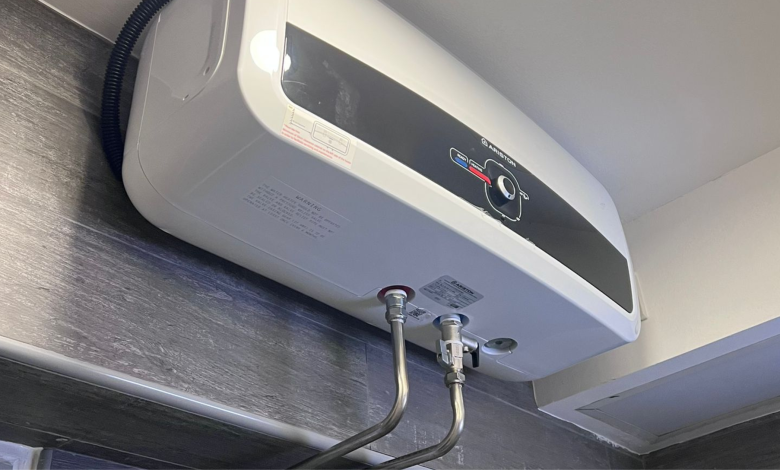Leaking Tap Repair: A Complete Guide

A leaking tap is one of the most common household plumbing problems. While it may seem like a minor issue, a constantly running tap can waste a significant amount of water and increase your utility bills. Additionally, persistent leaks can cause damage to your sink, countertops, or surrounding areas if left unchecked. Whether it’s a drip from a faucet, a steady stream of water, or a slow leak that’s gone unnoticed for weeks, addressing the problem is essential. This article will provide you with a detailed guide to leaking tap repair, including identifying the source of the leak, common causes, and how to repair it yourself.
Why Fixing a Leaking Tap is Important
Before diving into the repair process, it’s important to understand the significance of addressing a leaking tap promptly. A leaking tap can:
- Waste Water: Even a small drip can waste hundreds of liters of water each year, contributing to unnecessary water consumption. This can also lead to increased water bills.
- Cause Damage: Prolonged water leakage can lead to water damage on countertops, sinks, and cabinets. It can also cause mold and mildew growth, which can affect the health of your home.
- Annoyance: The constant sound of a dripping tap can be irritating, especially if the noise becomes louder over time.
- Efficiency: Fixing the leak restores the functionality of your faucet, ensuring that water is directed where it’s needed and doesn’t leak to unwanted areas.
Common Causes of a Leaking Tap
A leaking tap can occur for several reasons. Here are some of the most common causes:
- Worn Washer or O-Ring: The most common cause of a leaking tap is a worn washer or O-ring. These small rubber components are responsible for creating a seal that prevents water from leaking out of the faucet. Over time, they can become worn out or damaged due to regular use, causing leaks.
- Corroded Valve Seat: The valve seat connects the faucet handle to the faucet spout. Over time, mineral deposits and corrosion can build up on the valve seat, leading to leaks around the spout.
- Loose or Broken Components: A loose or broken component such as a handle, cartridge, or screw can also cause a leaking tap. These issues may require tightening or replacing the affected part.
- High Water Pressure: High water pressure can strain the components of your faucet, causing them to loosen or wear out more quickly. This can result in leaks.
- Damaged Cartridge: In faucets with a cartridge mechanism, a damaged or worn-out cartridge can lead to leaks. The cartridge controls the flow of water and is an essential part of the faucet’s operation.
- Old or Faulty Plumbing: In some cases, the cause of the leak may not be the tap itself but rather old or faulty plumbing pipes. Cracked or corroded pipes can lead to leaks around the faucet area.
Tools You’ll Need for Leaking Tap Repair
Before you begin the repair process, gather the necessary tools and materials. The exact tools will depend on the type of faucet and the repair you need to perform. Here’s a list of common tools for tap repair:
- Adjustable wrench
- Flathead and Phillips screwdrivers
- Replacement washers, O-rings, or cartridges (depending on the faucet type)
- Plumber’s tape (Teflon tape)
- Needle nose pliers
- Basin wrench
- Replacement faucet handle (if needed)
- Lubricating grease
- A cloth or rag to protect surfaces from scratches
Step-by-Step Guide to Leaking Tap Repair
Step 1: Identify the Source of the Leak
The first step in leaking tap repair is to identify the source of the leak. This can help determine what part of the faucet needs repair. Start by:
- Shutting Off the Water Supply: Before you start working on the tap, turn off the water supply to the faucet. You can usually find the shutoff valves under the sink. If you can’t find the individual shutoff valves, turn off the main water supply to the house.
- Inspecting the Tap: Carefully inspect the tap to see if you can identify the source of the leak. It might be coming from the base of the faucet, around the spout, or from the handle.
- Disassembling the Faucet: If you can’t locate the source of the leak, you may need to disassemble the faucet to take a closer look at the internal components. This step will depend on the type of faucet (compression, cartridge, ball, or disc).
Step 2: Disassemble the Faucet
Once the water is turned off, begin disassembling the faucet. Here’s how you can do it:
- Remove the Handle: Depending on the type of faucet, you may need to remove the decorative cap or cover from the handle, which may be held in place with a screw. Use a screwdriver to remove the screw and then pull off the handle.
- Remove the Stem or Cartridge: After the handle is removed, you will typically find a stem or cartridge that controls the flow of water. Use an adjustable wrench or pliers to carefully remove the stem or cartridge. For cartridge faucets, the cartridge will pull out easily. For compression faucets, the stem may require a bit of force to remove.
- Examine the Components: Once you have the internal components removed, inspect the parts for damage. Check for worn washers, O-rings, or a corroded valve seat. This will give you a better idea of what needs to be replaced.
Step 3: Replace the Worn Parts
If the source of the leak is a worn washer, O-ring, or cartridge, it’s time to replace these parts. Here’s how to do it:
- Replace the Washer or O-ring: If the washer or O-ring is worn or damaged, remove it carefully from the faucet and replace it with a new one. Be sure to use the correct size, as an incorrect size can cause further leaks.
- Replace the Cartridge (If Needed): If the leak is coming from the cartridge, remove the old cartridge and replace it with a new one. Make sure the new cartridge is compatible with your faucet model.
- Apply Plumber’s Tape: For any threaded connections, apply plumber’s tape (Teflon tape) around the threads to ensure a watertight seal.
Step 4: Reassemble the Faucet
Once the damaged parts are replaced, it’s time to reassemble the faucet:
- Insert the New Parts: Place the new washer, O-ring, or cartridge into their respective spots. Ensure they are seated properly and aligned correctly.
- Reattach the Stem or Cartridge: If you removed a stem or cartridge, reinsert the new one into place. Tighten it with a wrench or pliers, but be careful not to overtighten.
- Reattach the Handle: Once the internal components are in place, reattach the faucet handle and secure it with the screw.
Step 5: Turn the Water Back On
After you have reassembled the faucet, turn the water supply back on. Slowly open the faucet and check for leaks. If the tap is still leaking, you may need to recheck the components and make sure everything is sealed properly.
Troubleshooting Common Problems
If your tap continues to leak after you’ve replaced the parts, consider these possible issues:
- Incorrectly Installed Parts: Double-check to ensure that all parts are installed correctly, and no washers or O-rings are out of place.
- Damaged Threads or Valve Seat: If the threads or valve seat are corroded or damaged, they may need to be replaced or resurfaced. In some cases, a new faucet might be necessary.
- Loose Components: Make sure that all parts are properly tightened, but avoid overtightening, as this can cause damage to the faucet.
Preventing Future Leaks
To prevent future leaks, consider the following tips:
- Regular Maintenance: Periodically check your faucets for signs of wear and tear, including leaks, to address problems before they worsen.
- Use the Right Water Pressure: High water pressure can wear out faucet components quickly. Check the water pressure in your home and adjust it if necessary to avoid unnecessary strain on your faucets.
- Avoid Hard Water Build-up: Hard water can cause mineral deposits to build up inside the faucet and affect the seals. Consider installing a water softener or regularly cleaning the faucet to prevent this issue.
Conclusion
Repairing a leaking tap is a simple task that can save you money on your water bill and prevent unnecessary water damage in your home. With the right tools, a bit of patience, and a willingness to learn, you can tackle this problem yourself. By replacing worn washers, O-rings, or cartridges, and following the proper procedures, you can restore the efficiency and functionality of your faucet. However, if you’re unsure or the issue persists, don’t hesitate to call a professional plumber to ensure your tap is fixed properly and safely.









